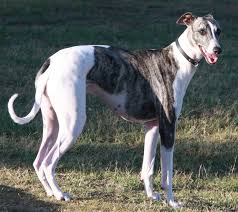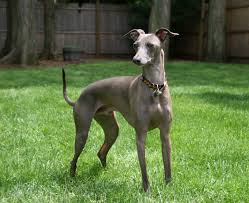Dogs are a man’s best friend (and women’s too). Our pets are a special part of our lives. Not only are they a part of our family; they’re also the most paradoxically strong and vulnerable part of our families. Caring for a pet is a commitment and dogs are certainly no different, even when they’re wilful and seemingly capable of doing whatever they please. A lot of what’s important when it comes to caring for our dogs (or other pets) is feeding them what they need to remain happy and healthy. But, not all dogs need the same foods. There are some that require special foods because just like humans, dogs can develop food sensitivities.
What Are the Symptoms of Sensitive Stomachs?
Few conditions present themselves without any symptoms and food sensitivities are certainly part of normalcy on that score. Food sensitivities are troubling on the inside and unfortunately that follows through to the outside too. Of course, anything that has to do with food also has to do with digestion. And the symptoms tied to food sensitivities are easy enough to spot.
Typically, when a dog has food sensitivities the symptoms are easy to see – or rather smell. Often this means that they will suffer from flatulence or loose stools. They may also vomit a great deal more than dogs would normally do. Conversely, some dogs also present a difficulty in digestion insomuch that they may have difficulty passing their stools.
Remember these symptoms may present themselves in any dog from time to time. When it comes to food sensitivities, however, these unfortunate symptoms will show up continuously – or at least frequently.
How Traditional Dog Foods Are Made
Dogs have nutritional needs just like any other animal, including humans. And, for the most part, those nutritional needs are rather simple to understand. Dogs are carnivores, so they need some meat to keep them healthy. But, they also need some other nutrients that are not found in meat.
As a result, most dog foods are made with a share of a relatively inexpensive animal meat, usually beef. And this is bound together with starches and other nutrients that canines need. This is typically enough for most dogs; it provides them with balanced nutrition and usually does not present them with a great deal troubles. As a bonus, it comes in a pellet form that is both easy to consume and store between meals. However, the composition of dog food can trouble those canines with sensitive stomachs.
How Do Food Sensitivities Develop?
Just like humans, some dogs are born with sensitive stomachs. Others develop their troubles over time. In fact, you can have a seemingly healthy dog one day and the next nothing but the symptoms of food sensitivities. That’s because food sensitivities can appear as the result of repeated exposure.
Over time, dogs (like humans) can experience troubles with digesting common foods because they have built up a tolerance to it. This tolerance means that they cannot produce the digestive enzymes needed to process the foods that they normally eat. The more a dog eats these foods, the more troubles they will present as time goes on. So, the longer your dog lives, the more likely he is to develop some sort of food sensitivity. Fortunately, this does not happen to all dogs, but it is important to be aware of the symptoms and solutions as it can happen to any dog.
Diagnosing Food Sensitivities
Just because your dog experiences the symptoms associated with food sensitivities, that’s not always the problem. Sometimes there are other illnesses that present the same symptoms as food sensitivities. So, although you may be quite confident that your pet is experiencing food sensitivities, you should get her off to the vet to be sure. After all, there may be something more serious at work, and this must be ruled out before you take any independent action.
Besides a trip to the vet, you will want to monitor your dog’s behaviour and symptoms for awhile. And, you’ll need to ensure that nothing is going into your dog’s system besides his normal food. This is crucial because you’ll need to exclude anything besides food as the cause of these problems.
Making the Switch to a Sensitive Dog Food
Once your vet diagnoses food sensitivities, you will be directed to change your pet’s food. This means making a switch to a food that doesn’t include the ingredients known to trouble your dog’s sensitive stomach. Your pet will still need the same nutrients; however, these will need to come from different sources. So, instead of beef, for example, your dog will need to have a different type of meat such as turkey or duck. Pellets will also need to be bound with different nutritional glues to ensure that symptoms don’t present themselves again. Usually, this also includes the use of prebiotics that help to build healthy flora in your pet’s gut. This will also help to prevent another eruption of food sensitivity symptoms.
Changing your pet’s diet is as simple or as complicated as your pet’s temperament. Some dogs take to a change in food rather easily. If your pet is one of them, then you can simply change out this food in one day. But, take note that you can’t expect the symptoms to reverse themselves as quickly. It will take awhile for your pet’s digestive system to catch up. On the other hand, you may need to make a gradual change in diet if your dog isn’t the sort that appreciates a change in routine.
Above all, it is important that you get in touch with your vet if you have any questions or concerns about your pet’s health. Although food sensitivities are something that can be managed, there are other health concerns that can be more serious. If your dog appears uncomfortable or experiences a change in behaviour during the change to the development and diagnosis of food sensitivities, then you must make that call. After all, our pets are dependent on us – and they make our families complete, don’t they?
To find out more about our range of Burgess Sensitive dog foods, go to the following link – http://www.burgesspetcare.com/brands/burgess-sensitive/



 I’ve always got my pets from a rescue centre. I think it’s a really worthwhile thing to do, so when I was looking for a dog, again I visited a local rescue centre. I fell in love with a gorgeous greyhound called Norman. He was so friendly, he seemed to take to me immediately. He looked fit and healthy and as I love to walk I knew he’d be my ideal companion.
I’ve always got my pets from a rescue centre. I think it’s a really worthwhile thing to do, so when I was looking for a dog, again I visited a local rescue centre. I fell in love with a gorgeous greyhound called Norman. He was so friendly, he seemed to take to me immediately. He looked fit and healthy and as I love to walk I knew he’d be my ideal companion.